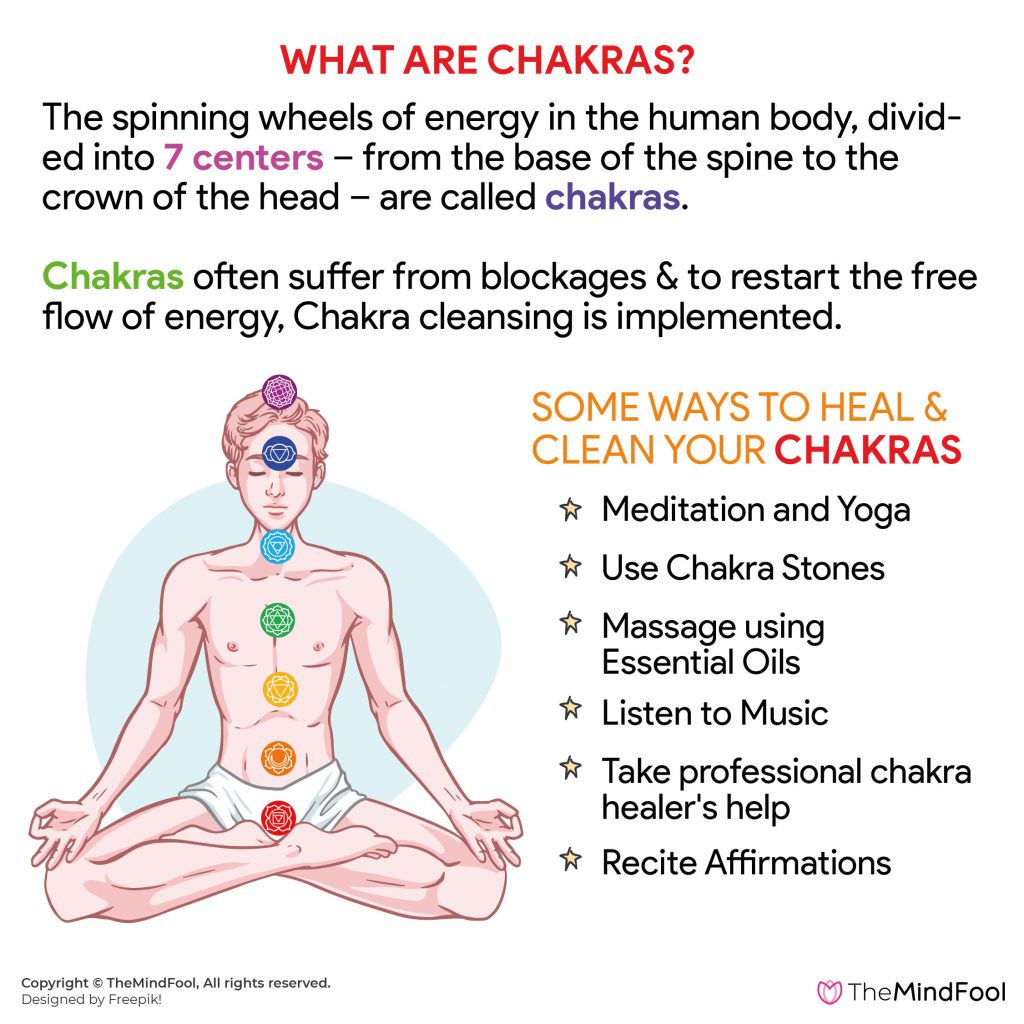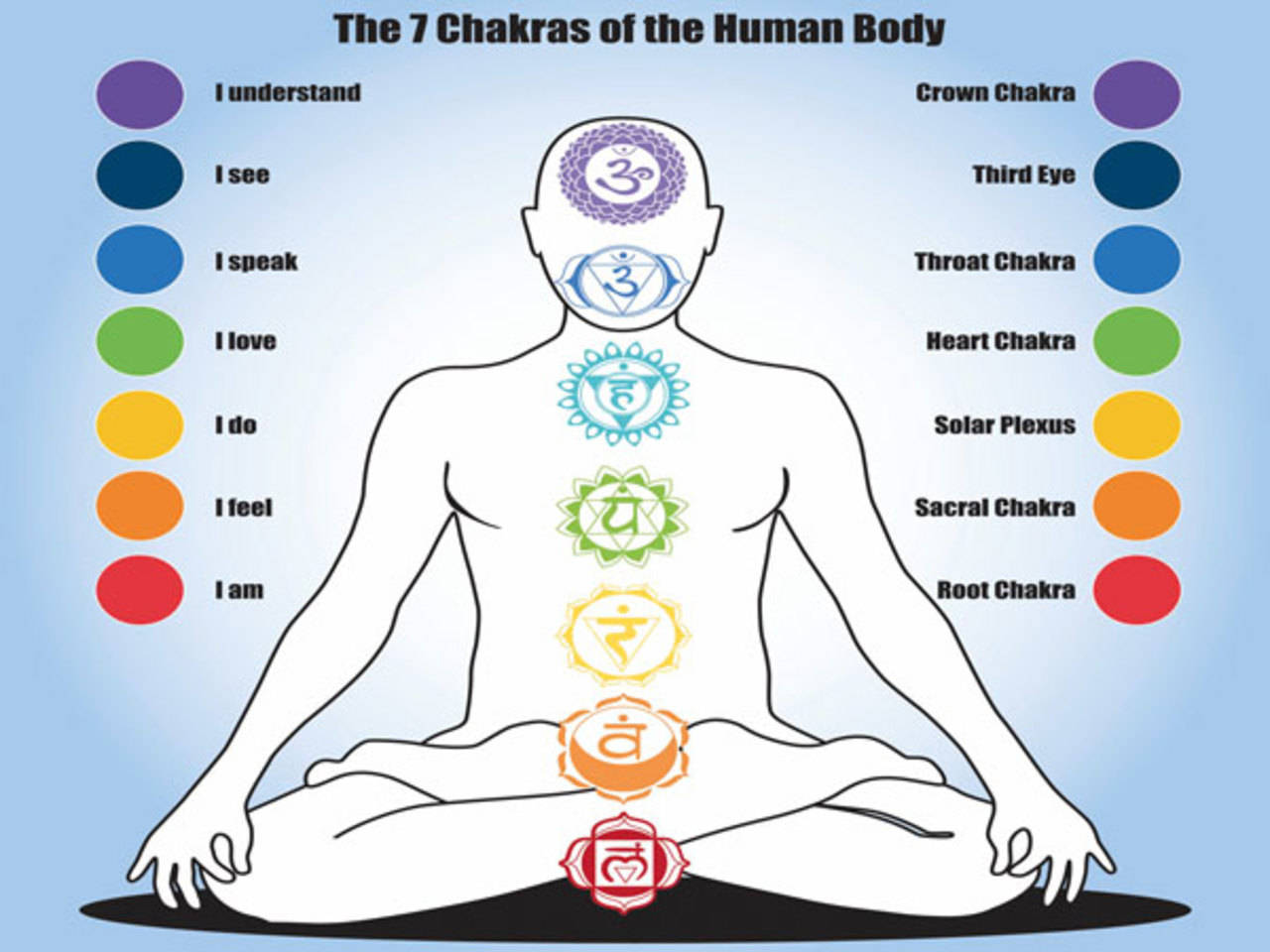Today, let’s explore the fascinating world of chakras and unravel the mystery of the most important one. Have you ever wondered which chakra holds the key to our overall well-being and balance? As we delve into this topic, prepare to discover the incredible power and significance behind one particular chakra that plays a vital role in our physical, emotional, and spiritual health. Get ready to embark on an enlightening journey that will deepen your understanding of the human energy system and leave you feeling more connected to your inner self.
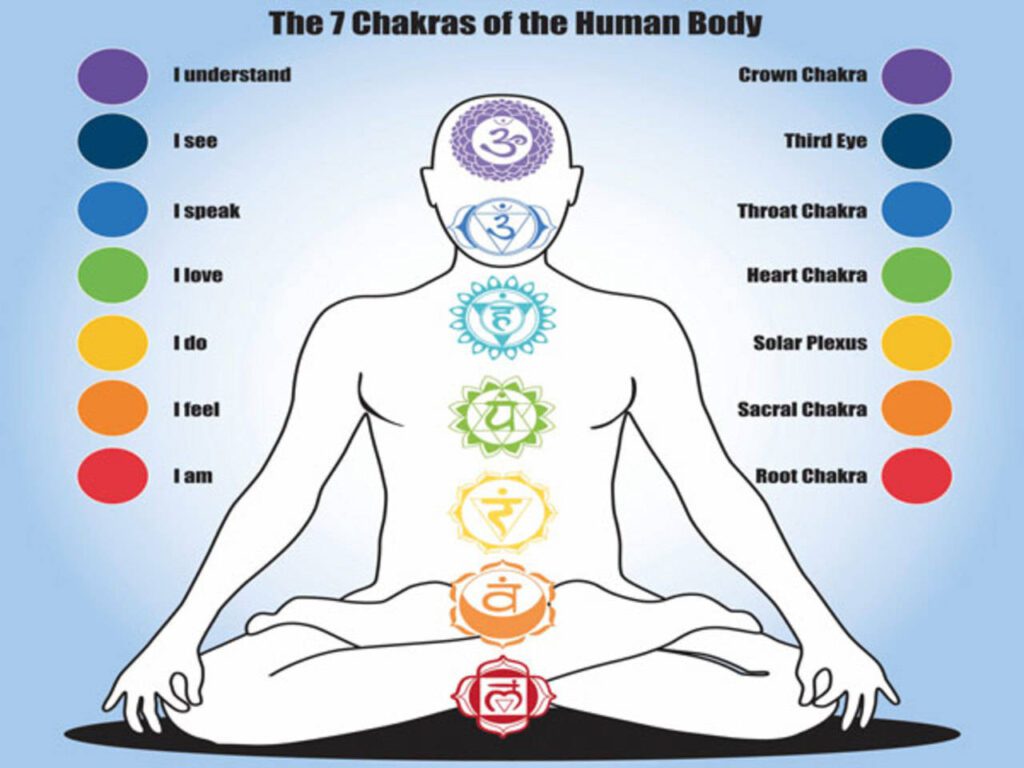
Overview of Chakras
Definition of chakras
Chakras are energy centers within the body that correspond to specific organs and emotional states. Derived from ancient Indian spiritual practices, the word “chakra” translates to “wheel” or “disk” in Sanskrit. These spinning wheels of energy are believed to be interconnected and essential for maintaining overall physical, emotional, and spiritual well-being.
Significance of chakras in the body
Chakras play a crucial role in our well-being by facilitating the flow of prana, or life force energy, throughout the body. They act as gateways, allowing energy to flow from the external world into our internal energy system. Each chakra is associated with specific qualities and attributes, contributing to both physical health and emotional balance.
Understanding the energy system
The human energy system consists of seven main chakras aligned along the spine, from the base to the crown of the head. These chakras, often depicted as vibrant, swirling vortexes of energy, can be visualized as spinning wheels. Each chakra resonates with a specific color, element, sound, and vibration, and connects to different aspects of our physical, emotional, and spiritual selves.
The Root Chakra
Location and characteristics
The Root Chakra, also known as the Muladhara, is located at the base of the spine, near the perineum. It is associated with the color red and connects us to our sense of stability, grounding, and foundation. The root chakra governs our basic survival needs, such as food, shelter, safety, and our sense of belonging.
Role in physical and emotional well-being
A balanced root chakra is essential for maintaining physical and emotional well-being. It ensures that we feel secure and grounded in our daily lives, allowing us to navigate challenges with stability and resilience. When this chakra is in balance, we feel a strong connection to our physical body, have a sense of belonging, and can trust in the abundance of the universe.
Effects of imbalance
Imbalances in the root chakra can manifest in various ways. When it is underactive, one may experience feelings of insecurity, fear, and a lack of grounding. Physical symptoms may include digestive issues, lower back pain, and fatigue. Conversely, an overactive root chakra can lead to stubbornness, materialism, and resistance to change.
Methods to balance the root chakra
To balance and align the root chakra, various practices can be incorporated into your daily life. These may include grounding exercises such as walking in nature, practicing yoga poses that focus on the lower body, meditation, engaging in root chakra affirmations, and working with crystals such as red jasper or hematite. Engaging in self-care activities and connecting with supportive communities can also have a positive impact on this foundational chakra.
The Sacral Chakra
Location and characteristics
The Sacral Chakra, known as the Svadhisthana, is located approximately two inches below the navel. Its color association is orange, and it is closely tied to our creative expression, sexuality, and emotional well-being. This chakra governs our ability to experience pleasure, nurture healthy relationships, and embrace our passions.
Role in physical and emotional well-being
The sacral chakra is vital in maintaining a healthy emotional and physical foundation. It enables us to embrace our sensuality, creativity, and emotions without judgment or shame. A balanced sacral chakra cultivates a sense of joy, abundance, and healthy emotional connection with ourselves and others.
Effects of imbalance
Imbalances in the sacral chakra can have a profound impact on our lives. When the sacral chakra is underactive, one may experience a lack of creativity, emotional numbness, or difficulties in forming intimate relationships. Physical symptoms can include lower back pain, menstrual issues, and urinary problems. On the other hand, an overactive sacral chakra can lead to emotional instability, obsessive attachments, and addiction tendencies.
Methods to balance the sacral chakra
To restore balance to the sacral chakra, engaging in activities that promote creativity, sensuality, and emotional expression can be beneficial. This may involve practicing creative hobbies, dancing, connecting with water elements, practicing self-acceptance and self-love, and working with healing crystals like carnelian and orange calcite. Balancing the sacral chakra involves embracing pleasure, nurturing healthy relationships, and finding outlets for emotional expression.
The Solar Plexus Chakra
Location and characteristics
The Solar Plexus Chakra, also called the Manipura, is situated above the navel, in the upper abdomen area. Its vibrant yellow color represents personal power, confidence, and willpower. This chakra is closely associated with our sense of self, self-esteem, and personal autonomy.
Role in physical and emotional well-being
The solar plexus chakra acts as the energetic center of personal power and self-confidence. It influences our ability to set and achieve goals, make decisions, and assert ourselves. A balanced solar plexus chakra fosters a strong sense of self-worth, empowerment, and the ability to navigate life’s challenges with clarity and determination.
Effects of imbalance
Imbalances in the solar plexus chakra can have a significant impact on our overall well-being. An underactive solar plexus chakra may result in feelings of low self-esteem, lack of confidence, and difficulty expressing oneself. Physical symptoms may include digestive issues, adrenal fatigue, and weight gain. Conversely, an overactive solar plexus chakra can lead to arrogance, aggression, and an excessive need for control.
Methods to balance the solar plexus chakra
To balance the solar plexus chakra, cultivating self-confidence and personal power through various practices is essential. This may involve engaging in activities that boost self-esteem, such as journaling, practicing self-compassion, setting boundaries, and embracing personal achievements. Incorporating physical exercise, practicing mindful breathing, and working with crystals like citrine and tiger’s eye can also help balance this chakra.
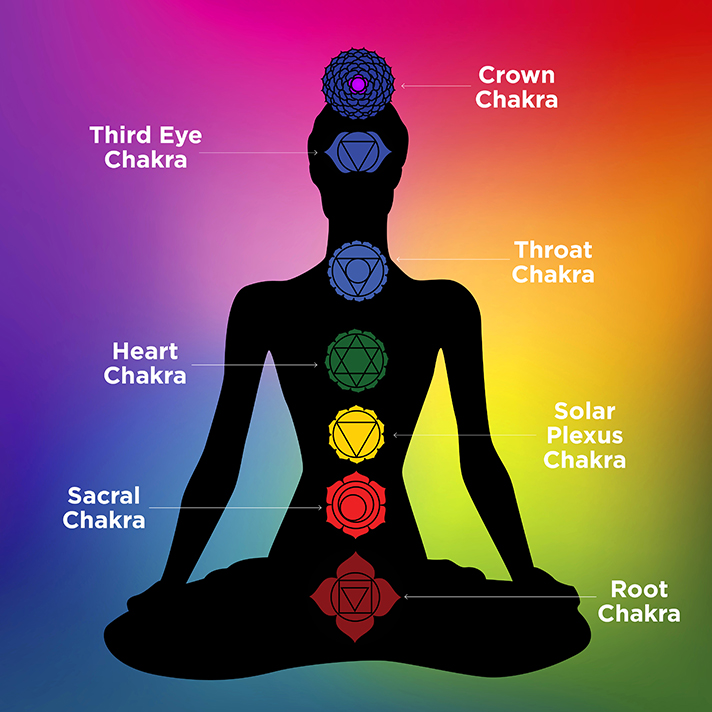
The Heart Chakra
Location and characteristics
The Heart Chakra, known as the Anahata, is located in the center of the chest, at the level of the heart. Associated with the color green or pink, this chakra represents love, compassion, forgiveness, and emotional healing. It connects us to our relationships, both with ourselves and others.
Role in physical and emotional well-being
The heart chakra plays a vital role in maintaining emotional well-being and fostering healthy relationships. It influences our ability to give and receive love, experience inner peace, and practice empathy and compassion. A balanced heart chakra cultivates harmonious relationships, emotional healing, and a deep sense of connection with oneself and others.
Effects of imbalance
Imbalances in the heart chakra can profoundly affect our emotional state and relationships. An underactive heart chakra may result in feelings of isolation, fear of intimacy, or difficulties in forming close connections. Physical symptoms may include heart-related issues, respiratory problems, and immune system imbalances. Conversely, an overactive heart chakra can lead to emotionally overwhelming tendencies, codependency, and self-sacrifice.
Methods to balance the heart chakra
To balance and open the heart chakra, practicing acts of love, compassion, and emotional healing are essential. Engaging in self-care rituals, expressing gratitude, and practicing forgiveness can help restore balance. Spending time in nature, practicing heart-centered meditations, and working with crystals like rose quartz and green aventurine can also aid in balancing this chakra.
The Throat Chakra
Location and characteristics
The Throat Chakra, also called the Vishuddha, is situated in the throat region. It is associated with the color blue and is connected to our ability to communicate effectively and express ourselves authentically. This chakra plays a crucial role in our verbal and non-verbal expression, as well as our ability to listen and receive.
Role in physical and emotional well-being
The throat chakra is vital for healthy self-expression and clear communication. It enables us to speak our truth, express our creativity, and actively listen to others. A balanced throat chakra fosters effective communication, self-expression, harmonious relationships, and the ability to live authentically.
Effects of imbalance
Imbalances in the throat chakra can affect our ability to express ourselves and communicate effectively. An underactive throat chakra may lead to difficulties in self-expression, fear of speaking up, or feelings of being unheard. Physical symptoms may include sore throat, thyroid imbalances, and jaw tension. Conversely, an overactive throat chakra can manifest as excessive talking, self-righteousness, and an inability to listen.
Methods to balance the throat chakra
To balance and align the throat chakra, engaging in practices that support authentic self-expression is vital. This may involve journaling, singing, practicing mindful communication, and speaking affirmations. Creative activities like painting or writing can also aid in balancing this chakra. Working with crystals like blue lace agate or lapis lazuli, and engaging in throat chakra-opening yoga poses, can further support the balance of this chakra.
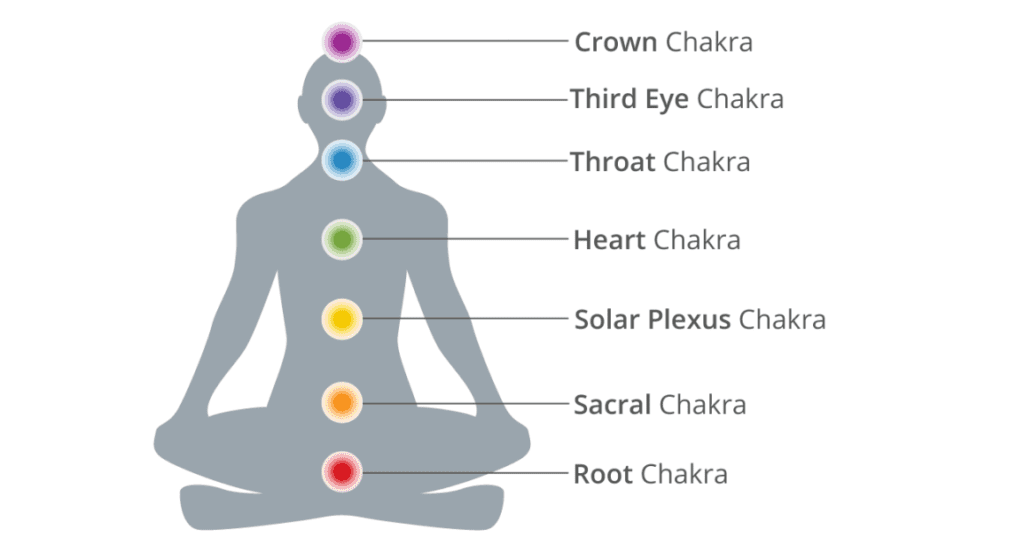
The Third Eye Chakra
Location and characteristics
The Third Eye Chakra, also known as the Ajna, is located in the center of the forehead, slightly above the space between the eyebrows. Its indigo color is associated with intuition, insight, and spiritual awareness. This chakra is closely tied to our inner guidance and perception of the world beyond the physical.
Role in physical and emotional well-being
The third eye chakra is essential for developing intuition, expanding perception, and deepening spiritual awareness. It influences our ability to understand the bigger picture, trust our instincts, and connect with our inner wisdom. A balanced third eye chakra fosters clarity, heightened intuition, and a deeper sense of purpose and meaning in life.
Effects of imbalance
Imbalances in the third eye chakra can affect our ability to trust our intuition and perceive the world accurately. An underactive third eye chakra may result in feelings of confusion, lack of focus, or difficulty in making decisions. Physical symptoms may manifest as headaches, eye strain, and sleep disturbances. On the other hand, an overactive third eye chakra can lead to obsessive thinking, spiritual bypassing, and disconnectedness from the physical world.
Methods to balance the third eye chakra
Balancing and opening the third eye chakra involves practices that enhance intuition and promote spiritual growth. Meditation, mindfulness, and cultivating a connection with nature can help balance this chakra. Engaging in activities like dream journaling, practicing visualization exercises, and working with crystals like amethyst or labradorite can further boost the balance of this chakra.
The Crown Chakra
Location and characteristics
The Crown Chakra, known as the Sahasrara, is located at the top of the head. Its color association is violet or white, representing spiritual connection, divine consciousness, and universal energy. The crown chakra serves as the gateway to higher states of consciousness and our connection to the divine.
Role in physical and emotional well-being
The crown chakra plays a crucial role in our spiritual growth and connection to the universe. It influences our ability to access higher states of consciousness, experience spiritual transcendence, and cultivate a deep sense of inner peace and oneness. A balanced crown chakra fosters spiritual connection, clarity, and a profound sense of purpose and fulfillment.
Effects of imbalance
Imbalances in the crown chakra can have a significant impact on our spiritual well-being and overall sense of purpose. An underactive crown chakra may result in feelings of disconnection from spirituality, lack of purpose, or difficulty in finding meaning in life. Physical symptoms may manifest as migraines, neurological imbalances, and sensitivity to light. Conversely, an overactive crown chakra can lead to spiritual escapism, dogmatism, and an overemphasis on the material world.
Methods to balance the crown chakra
To balance and harmonize the crown chakra, engaging in practices that promote spiritual connection and inner peace is crucial. Meditation, mindfulness, and contemplative practices can help open and balance this chakra. Spending time in nature, connecting with divine energy through prayer or ritual, and working with crystals like clear quartz or amethyst can further assist in balancing the crown chakra.
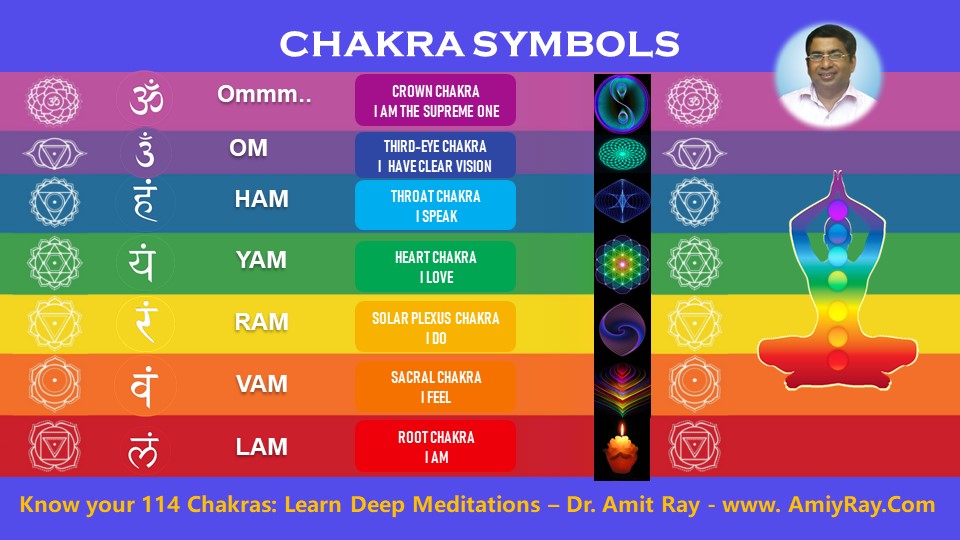
Comparing the Importance of Chakras
Understanding the interconnection of chakras
While each chakra plays a significant role in our overall well-being, it is essential to understand their interconnection. The chakras do not function in isolation but rather work together harmoniously as part of our intricate energy system. Imbalances in one chakra can affect the functioning of other chakras, leading to disharmony and disruptions in our energy flow.
The significance of balanced chakras
Maintaining balanced chakras is crucial for holistic well-being. When all chakras are in harmony, energy flows freely throughout the body, facilitating physical, emotional, and spiritual health. Balanced chakras contribute to a sense of wholeness, vitality, and alignment with our true selves.
The influence of imbalances on overall health
Imbalances in the chakras can manifest in various physical, emotional, and spiritual symptoms. When chakras are blocked or out of balance, it can lead to issues such as chronic physical illnesses, emotional instability, and a sense of disconnection from our true potential. Addressing these imbalances through chakra healing practices can bring about a sense of equilibrium and support overall health and well-being.
Determining the Most Important Chakra
Individual experiences and perspectives
The perception of the most important chakra in the body can vary from person to person. Each individual’s energetic needs, life experiences, and spiritual beliefs influence their perspective on chakra importance. It is essential to honor and respect individual experiences and perspectives when discussing the significance of chakras.
The subjective nature of chakra importance
Chakra importance is subjective and deeply personal. While some individuals may find the root chakra to be pivotal for a strong foundation, others may prioritize the heart chakra for emotional well-being and connection. The significance of chakras can change throughout one’s life journey, reflecting personal growth and evolving energetic needs.
The concept of personal energetic needs
Ultimately, the most important chakra in the body is the one that requires attention and healing based on an individual’s energetic needs. By developing self-awareness, practicing self-care, and exploring various chakra balancing techniques, one can determine which chakra is calling for attention and prioritize its healing and alignment.
In conclusion, all chakras play a crucial role in our physical, emotional, and spiritual well-being. Each chakra contributes to our overall energetic balance, and imbalances in any of them can have profound effects on our health and quality of life. Understanding the functions and characteristics of each chakra, as well as practicing techniques to balance and harmonize them, can lead to a more holistic and vibrant existence. Remember, the most important chakra is the one that resonates with your personal energetic needs and supports your journey towards balance and self-discovery.
